Knife sheaths play a critical role in knife safety and protection. They protect the important parts of a knife from damage and accidental injuries and make it easier to carry them around. There are different materials used to make knife sheaths, but the most popular one is leather.
This article will discuss all you need to know about the best leather for knife sheaths. You’ll also learn other common materials that make great knife sheaths, such as plastic, nylon, and Kydex.
Table of contents
Why choose a leather sheath for your knife?
For a long time, leather has been a popular choice for knife sheaths, whether fixed blade or folding. People prefer leather, especially vegetable-tanned leather, over synthetic materials. The main reason for its popularity is longevity and durability.
Pros of leather as a knife sheath
- Aesthetics: Leather sheaths often look better and more expensive than synthetic sheaths. They also come in various colors, textures, and finishes to match your knife or your style. The perfect pairing of your blade with the right look and feel gives you an unparalleled sense of satisfaction.
- Flexibility: Leather sheaths fit your knife perfectly to form the blade’s shape. They also break in and become customized for a snug and secure fit. This feature isn’t the case with synthetic sheaths that can be a little too tight or too loose, eventually leading to blade wear and tear.
- Comfort: Leather sheaths are comfortable to wear. They don’t cause any irritation, even when worn for extended periods.
- Durability: Leather is known for its durability. It can withstand wear and tear, as well as extreme weather conditions. The best quality leather doesn’t fade or crack even when exposed to the sun or rain for a long time.
- Resistance to abrasion: Leather sheaths are smooth and don’t catch or tear easily when rubbed against hard surfaces. It protects the knife’s blade from scratching and other forms of damage. The best quality leather reduces friction when in contact with different materials.
- Low maintenance: Leather sheaths don’t require any special care or maintenance. You need to clean and dry them after use properly.
- Cheaper than other materials: Leather sheaths are cheaper than some synthetic sheaths. While not all leather sheaths are affordable, you can get decent ones at lower prices.
Real leather
There are different types of leather, each with its own set of qualities. Two types stand out as the top choices for knife sheaths. These types vary depending on the tanning process used.
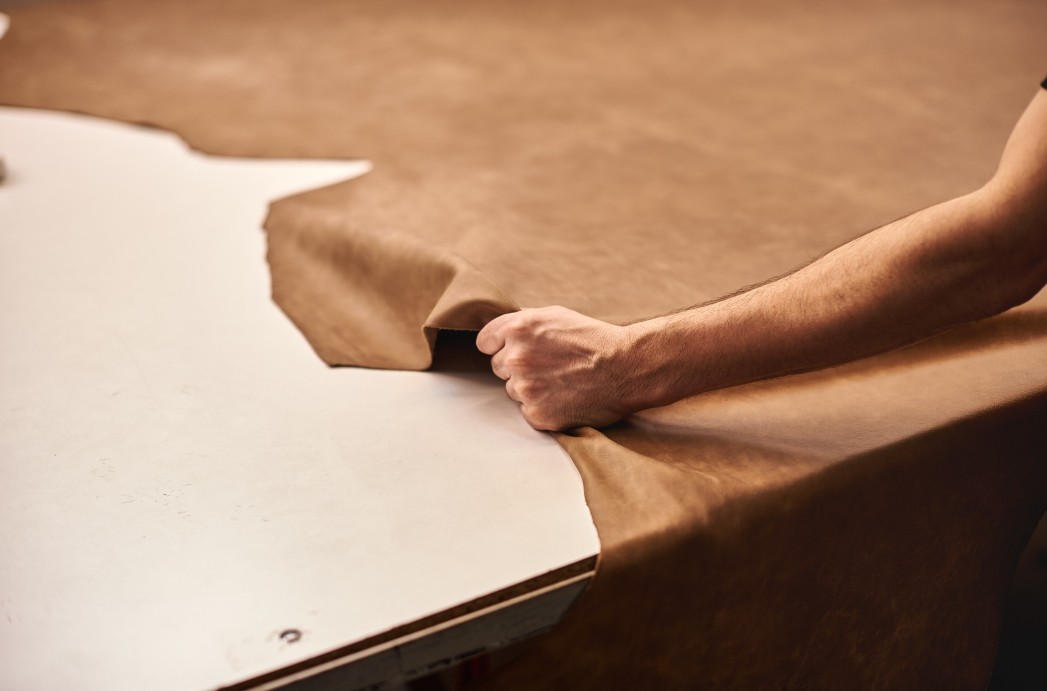
Tanning methods
- Vegetable-tanned leather
- Chrome tanned leather
Vegetable-tanned leather
Vegetable-tanned leather is the best type of leather for knife sheaths. Making vegetable-tanned leather involves using natural materials, such as bark leaves and branches. These ingredients give the leather a natural color and texture.
Depending on the level of craftsmanship, the resulting appearance can range from dull to polished. The natural look of vegetable-tanned leather enhances grip and provides a classic rugged appearance that is aesthetically appealing.
Appearance
A finished product features visible fibers and a pleasant, earthy smell. The leather is flexible and can be molded to fit the knife snugly. It’s also one of the most durable types of leather and resistant to moisture, making it a good choice for knife sheaths.
The shades, nuances, and hues mark genuineness in vegetable-tanned leather. Some pieces may lack the consistency that is of other leathers. However, this is not a sign of defect but a testament to the organic and natural processes used in the tanning method.
While vegetable-tanned leather has numerous advantages such as sturdiness, aesthetics, and durability, it also has disadvantages. For one, it’s expensive and time-consuming to produce. On the brighter side, it uses natural resources instead of chemicals, making it an environmentally-friendly option.
Chrome tanned leather
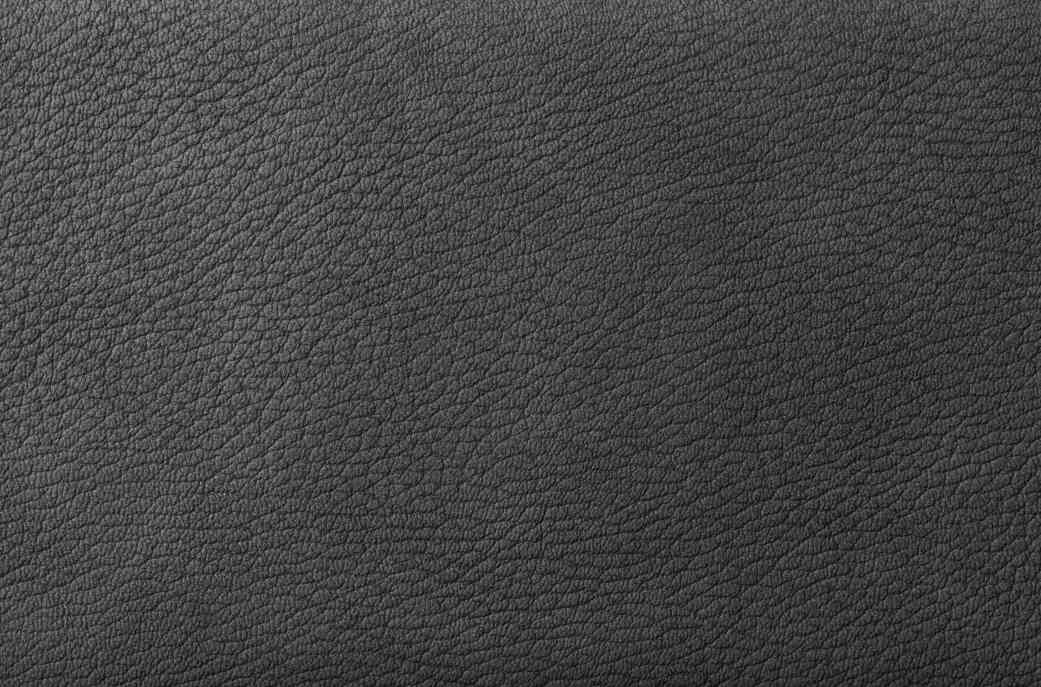
Chrome tanned leather is the most popular type of leather. Making chrome tanned leather involves treating the hide with chromium and acidic salts. The process is faster than making vegetable-tanned leather, but the characteristics may vary.
As with vegetable-tanned leather, chrome-tanned leather offers varying results based on the quality. Poor quality pieces are prone to cracking, staining, and peeling. High-quality chrome-tanned leather is less likely to experience these problems and maintain a polished finish.
Appearance
The resulting color of chrome-tanned leather is even and uniform. It’s usually dyed to enhance the shade and doesn’t fade faster when exposed to UV rays. However, it can be susceptible to scratching and fading once used extensively with the knife.
Chrome-tanned leather is easy to maintain and clean. It prevents the formation of mold and mildew and repels water, making it a good choice for wet environments. It’s also cheaper than vegetable-tanned leather, making it a more affordable option.
Since chrome-tanned leather is less expensive and easier to produce, it’s the most common type of leather. Chrome tanned leather accounts for more than 90% of the leather produced globally. The tanning process discharges large amounts of chrome containing tiny leather particles into the environment. As such, it’s not an environmentally-friendly option.
Handpicked for you
True cutting power in the palm of your hand
Leather Grades
There are different grades of leather with each representing different attributes. The most common grades include:
- Bonded leather
- Top grain leather
- Split leather
While the terms are not standardized, they offer a general understanding of the quality of leather.
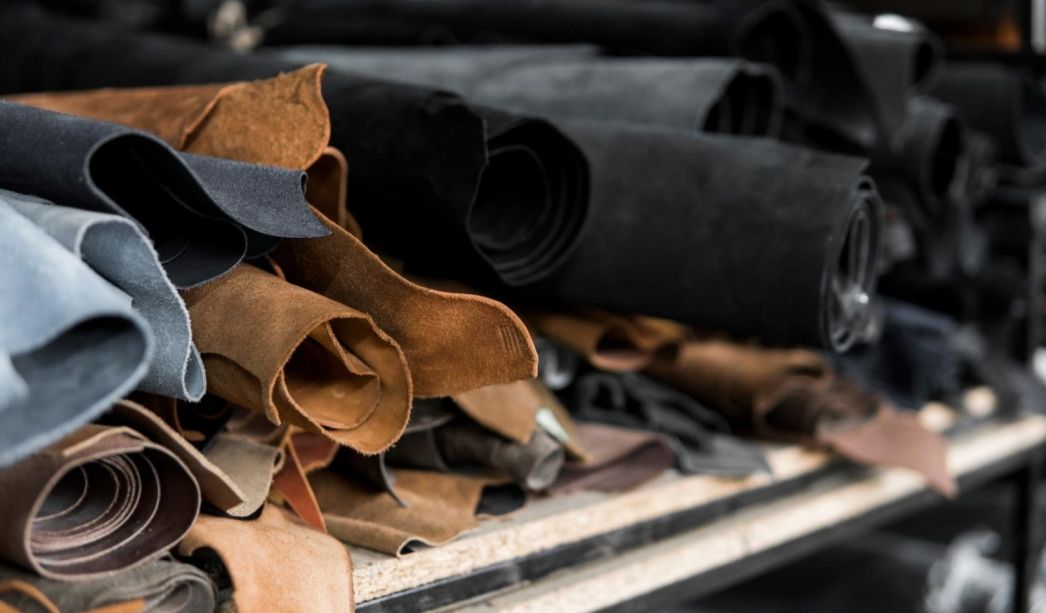
Bonded leather
Bonded leather is a type of synthetic leather. It’s made of leftover pieces of leather that are shredded and then bonded together with a polyurethane coating. The layered structure comprises a fiber or a paper backer that holds the shredded leather together.
The surface treatment for this kind of leather can be a variety of colors and finishes. However, it doesn’t have the same natural appearance or feel as the treatment doesn’t penetrate the surface like it would when dying the leather.
Using bonded leather for knife sheaths is a cost-effective option. The leather gives the knife sheath a uniform and consistent appearance. Creating the sheath with a natural material like leather can be expensive.
Pros of bonded leather
- Environmentally friendly: It uses leather waste and manufacturing scrap to create a new product.
- Easy to clean: The material is resistant to stains and requires minimal care.
- Sustainable: It doesn’t require animal hide and is least likely to add environmental pollutants such as chromium.
- A cost-effective solution: It is a budget-friendly option when compared to other materials.
Cons of bonded leather
- Shorter lifespan: The material is prone to peeling, cracking, and scratches.
- Color fading: It doesn’t hold its color as well as natural leather over time.
Top grain leather
Top grain leather is the second most popular grade of leather. It is also the highest grade available for vegetable-tanned leather. This makes it ideal for sheaths that will undergo heavy use and exposure to humidity, moisture, sunlight, and other outdoor conditions.
In a basic sense, top grain leather is the topmost layer of the hide that has had the natural surface removed by either sanding or shaving. The finish of top grain leather depends on the tanning process used. The higher quality processes allow the grain structure to be visible and impart a polished appearance.
Top grain leather is ideal for luxury goods and other applications that need a sophisticated and polished look. It’s also more expensive than other grades of leather.
Pros of top grain leather
- Easier to work with: It’s a flexible material that can hold its form after being bent and shaped.
- A polished look: The top grain leather is available in different finishes.
- Good abrasion resistance: The grain structure makes it more resistant to scratching.
- Consistent finish: The surface features are consistent on every piece of leather.
- Longer lasting: Top grain leather won’t wear out as quickly as other kinds of leather. The grain structure gives it a harder surface that is more resistant to scuffs and scratches.
Cons of top grain leather
- Limited breathability: The material doesn’t allow for moisture to release from the skin. This can make it uncomfortable to use against bare skin on warm days.
- Requires regular maintenance: Constant and effective care is paramount to prevent the leather from cracking and fading.
Split leather
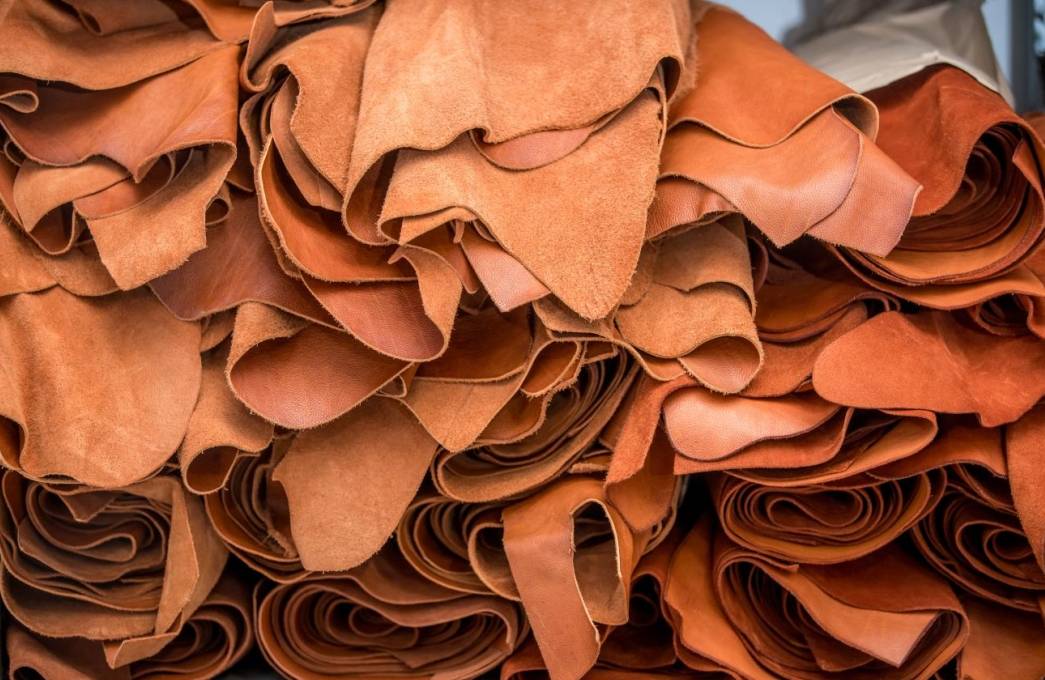
Split leather is the third most popular grade of leather and one of the cheapest. As the name suggests, it is made from the lower grades of hide split into two or more layers. Split leather is the bottom-most part of the hide that splits away during the splitting process.
It has a rougher surface than top-grain leather. This makes it less suitable for high-end products. However, it’s perfect for knife sheaths that won’t receive a lot of exposure and will primarily be used for storage.
Pros of using split leather
- Resistant to abrasion: The dense fibers give it a durable and protective surface.
- Water-resistant: The material has a lot of texture that prevents moisture penetration.
- A cost-effective solution: Split leather is one of the cheapest grades of leather.
Cons of split leather
- Chipping and tearing: It’s susceptible to various forms of surface damage such as chipping and cracks.
- Weak fiber structures: The fibers are not as tightly bound as in other grades of leather, making it less durable.
Artificial/faux leather
Artificial or faux leather is a synthetic alternative to natural leather. The manufacturing process of faux leather involves combining various materials like polyurethane, nylon, and polyvinyl chloride (PVC). This type of leather tries to imitate the appearance, feel, and texture of natural leather.
The manufacturing process is reliant on plastic materials, which makes it an environmentally unfriendly option. It also doesn’t biodegrade and takes a long time to decompose. The chemical process also releases harmful toxins that are harmful to both humans and the environment.
Despite the numerous downsides and lack of realness, faux leather makes a great choice for knife sheaths. It’s affordable, water-resistant, and durable. For those reasons, it’s a popular choice for everyday products.
What is the best option for leather knife sheath?
Both vegetable-tanned and chrome-tanned leather have their advantages and disadvantages. It comes down to your priorities as a consumer. If you’re on a tight budget, chrome-tanned leather is the better option.
But if you want a high-quality, long-lasting product that’s environmentally friendly, vegetable-tanned leather is the better choice. Overall most people will opt for chrome tanned leather because it’s readily available and slightly cheaper. Vegetable-tanned leather is more expensive and takes more time to produce, but it’s a much higher quality product.
The most popular options for knife sheaths are top-grain and bonded leather. While top-grain may seem like a better option to many, bonded leather is environmentally friendly, easier to maintain and offers an aesthetic quality that split and top-grain leather lacks.
Overall, the best leather for knife sheaths is a personal preference. You should assess your needs and wants as a consumer and then make a decision based on that information. Whichever option you choose, make sure to take care of the leather to ensure that it lasts for years to come.
What’s the best weight leather for knife sheath?
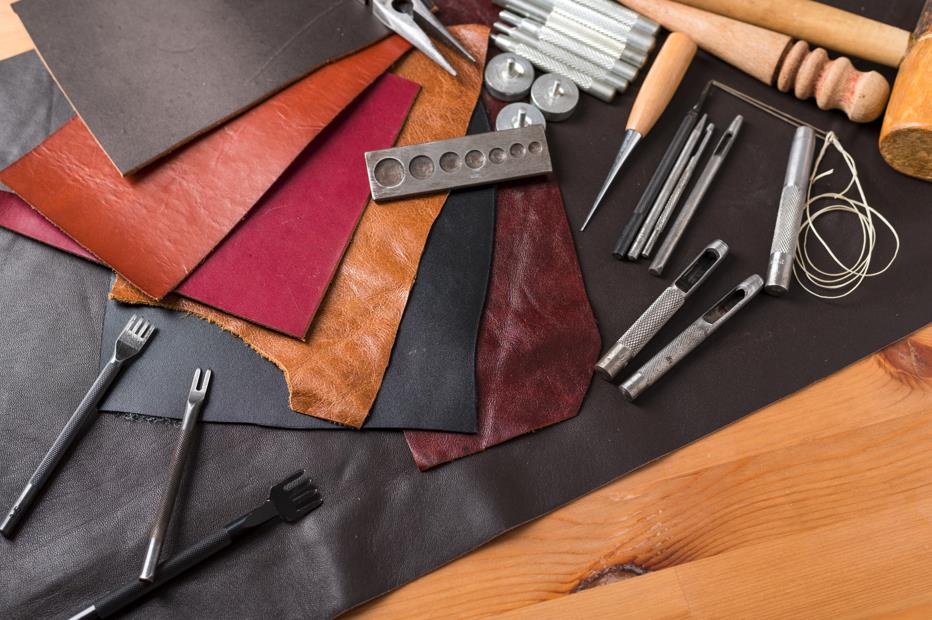
Sheaths come in different-weight leathers. The weight refers to the thickness of the leather. The weight of the leather is significant because it will affect how the sheath wears over time. Heavier-weight leathers are more durable and last longer than lighter-weight leathers.
If you’re using your knife sheath frequently, then you’ll want to choose heavier-weight leather. However, if you’re only using the sheath at specific times throughout the year, then a lighter-weight option may be more suitable for you.
The weight of the leather is measured in ounces (oz). The higher the number of ounces, the thicker and heavier the leather. To make a good sheath, you should look for leathers from 6 oz to 7 oz. Ideally, vegetable-tanned leather makes the best choice because it has thicker dimensions compared to chrome-tanned leather.
Other common material for knife sheath
Leather is not the only material that can make an excellent sheath. There are different materials you can use to make sheaths for your knife. The material you choose will depend on your budget and personal preferences. Some of these materials include:
Plastic
Plastic knife sheaths are typically fashioned from various polymer types, and they offer several distinct advantages. Firstly, they tend to be more affordable than other sheath materials, making them accessible to a wide range of users. Secondly, plastic sheaths exhibit commendable durability and resistance to moisture, making them suitable for outdoor and damp environments. That is also the reason why they are more often used to make sheaths for EDC knives.
Furthermore, their lightweight nature appeals to those seeking to minimize the overall weight of their gear. Lastly, you can design your plastic knife sheath to look stylish. While it won’t have the natural look and feel of leather, it makes up for it with its glossy and smooth appearance.
Nylon
Nylon, a synthetic thermoplastic polymer renowned for its strength and versatility, is a compelling choice for knife sheaths. Nylon sheaths offer the advantage of being lightweight, water-resistant, and durable. They’re also easy to maintain and clean. Moreover, their flexibility allows them to conform to the unique shape of the knife, ensuring a secure fit and reducing the risk of accidental slips.
The downside is that they can quickly deteriorate due to frequent exposure to moisture. Nylon is one of the cheapest options.
Kydex
Kydex is a synthetic material often used to make knife sheaths. Despite being a rare material, Kydex is an excellent choice for sheaths because it offers better functionality and durability than plastic or nylon. It doesn’t have the best appearance, plus it’s far more expensive compared to other options.
However, Kydex sheaths are highly functional and can hold your knife securely. For this reason, it’s a popular option for law enforcement and military personnel.
FAQs
What is the best material for a knife sheath?
The best material for a knife sheath is leather. It’s durable and lasts longer than other materials. If you’re using your knife sheath frequently, then you’ll want to use heavy-weight leather. However, if you only use the sheath at specific times throughout the year, then a lighter-weight option may be more suitable for you.
Do leather sheaths dull knives?
Poorly made leather sheaths will dull your knife’s blade. Some leathers and chemicals used to work leather can be abrasive. These sheaths should not be used with knives. Some types of leather will hold water, which can cause the blade to rust.
Should I oil my leather sheath?
You should occasionally oil your leather sheath with a light coat of neatsfoot oil. Excessive oiling will make the leather soft and susceptible to water damage. Ideally, you should lubricate your sheath every 6 to 12 months.
Are nylon sheaths good?
Nylon sheaths are not the best quality, but they are affordable and water-resistant. They’re not as durable as leather sheaths, but they can last for a few years with proper care. Using a nylon sheath is a good option for short-term or light use.
Closing
The best leather for knife sheath is one that’s durable and water-resistant. It should have an ergonomic design with flexibility and shock absorption. One that features aesthetic designs, such as engraving and leather tooling, can improve the appearance of your knife.
Visit our store for high-quality knives and accessories to improve your knife handling experience.












